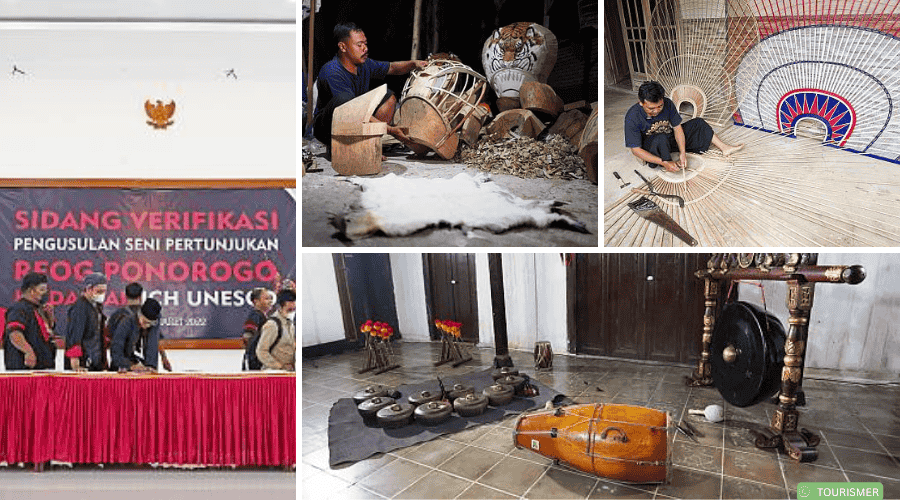In 2024, Reog Ponorogo, an impressive traditional Indonesian dance drama, was inscribed on UNESCO's List of Intangible Cultural Heritage in Need of Urgent Safeguarding. Much more than a simple performance, Reog embodies a living expression of identity, collective memory, and ancestral art. At a time when responsible tourism is gaining momentum, discovering, supporting, or attending a Reog Ponorogo performance is a concrete and respectful way to celebrate cultural diversity.
What is Reog Ponorogo?
Originating from the Ponorogo region of East Java, Reog is a thousand-year-old dramatic dance, traditionally performed during purification ceremonies, weddings, religious festivals, national celebrations, and official visits. Dancers portray kings, warriors, horsemen, and mythological figures to recount the legend of King Klono Sewandono of the Bantarangin Kingdom.
The highlight of the show is the Dadak Merak: a huge mask depicting a tiger's head adorned with peacock feathers. This mask can weigh over 50 kilos and is held up solely by the dancer's jaw strength, illustrating the rigor and discipline required to master this art.
For the Ponorogo community, the Reog represents a symbol of pride, a pillar of identity, and a living cultural treasure. However, it faces threats.
A Tradition in Decline
Modern music performances, considered more practical and economical, are gradually replacing traditional performances. Due to the lack of audiences and the declining interest of younger generations, Reog masters are becoming rare, as are artisans specializing in the creation of costumes, instruments, and masks.
The Indonesian government and local communities are working to preserve this tradition through formal and informal education, cultural festivals, and awareness-raising initiatives. Despite these efforts, the lack of new talent is hampering the transmission of this complex art.
Reog Ponorogo in France: A Discreet Presence
In France, the survival of Reog Ponorogo relies on the Indonesian diaspora and certain multicultural events. It is sometimes presented at international cultural festivals, cultural days organized by embassies, or at student events.
To attend a performance or find out more:
- TheEmbassy of Indonesia in Paris regularly offers cultural events open to the public.
- Indonesian student associations or community cultural groups perform traditional performances.
- Some UNESCO events also highlight intangible heritage arts.
Following these structures on social networks is a great way to stay informed of upcoming performances.
An Opportunity for Responsible Tourism
For impact-conscious travelers, attending a Reog Ponorogo performance — in France or Indonesia — is a way to contribute to the preservation of living heritage. Responsible tourism isn't just about reducing your carbon footprint; it's also about promoting local traditions and supporting the communities that preserve them.
By traveling to Ponorogo, the heart of this tradition, and attending a local performance, the traveler becomes an agent of change, directly contributing to the survival of this unique art.
Conclusion
Reog Ponorogo is a cultural cry from Java, both proud and fragile. In the face of modernity and oblivion, it calls for recognition and action. As travelers, curious people, or lovers of world cultures, we have a role to play: to celebrate what makes people unique and to support what excites them.

